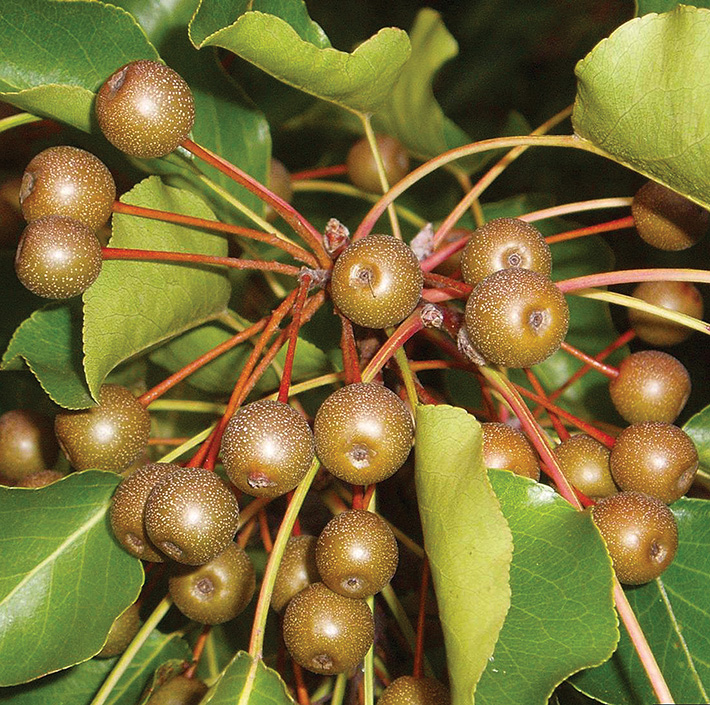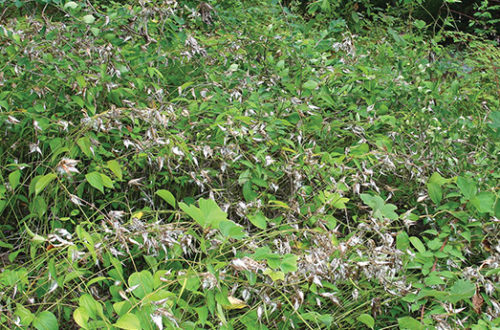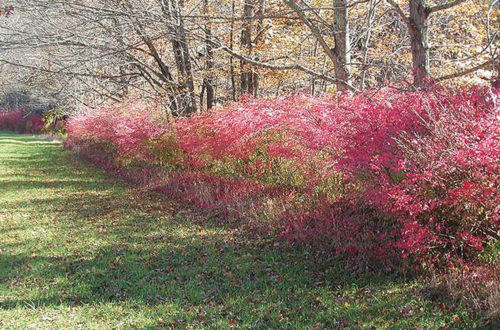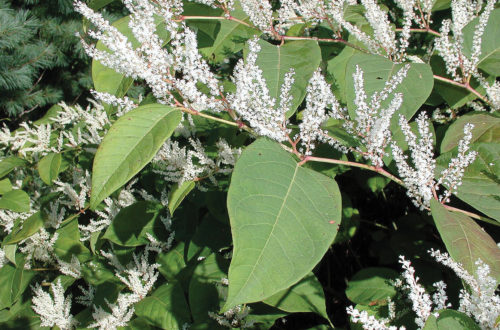Callery pear (Pyrus calleryana) is not officially considered invasive in Connecticut but it should be. For that to happen the Invasive Plants Council (IPC) has to place it on the official list. In Connecticut, the IPC is the body responsible for the state’s Invasive Plant List under CT General Statutes.
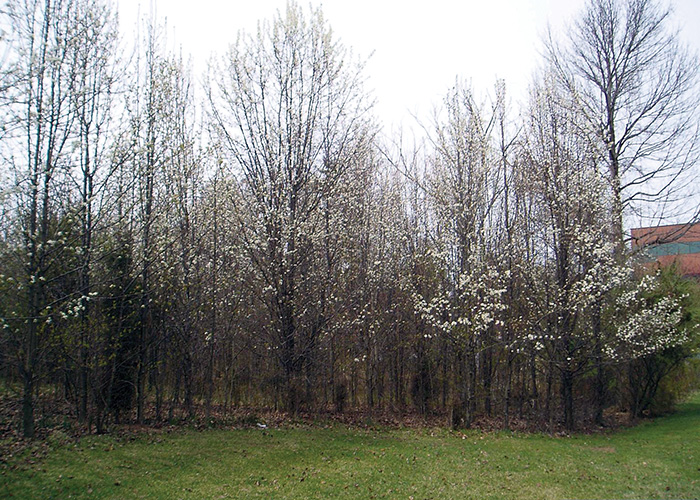
An infestation of Callery Pear (Pyrus calleryana)
Callery pear is on Connecticut’s “Research List” of plants about which they’d like more information. It’s considered invasive in a number of states and many sources describe it as not recommended. We add our name to that list but the horse has already left the barn.
A native of China, Japan, Korea and Vietnam, Callery pear was originally brought to the states in 1908, arriving at the Arnold Arboretum in Boston. It was also imported by the U.S.D.A. in 1916 because of its resistance to fireblight, a disease that was decimating the commercial pear industry at the time. It was routinely used as rootstock.
In the 1950s cultivars were developed from Chinese varieties for use as ornamentals. The Bradford pear is a well-known example but there are others.
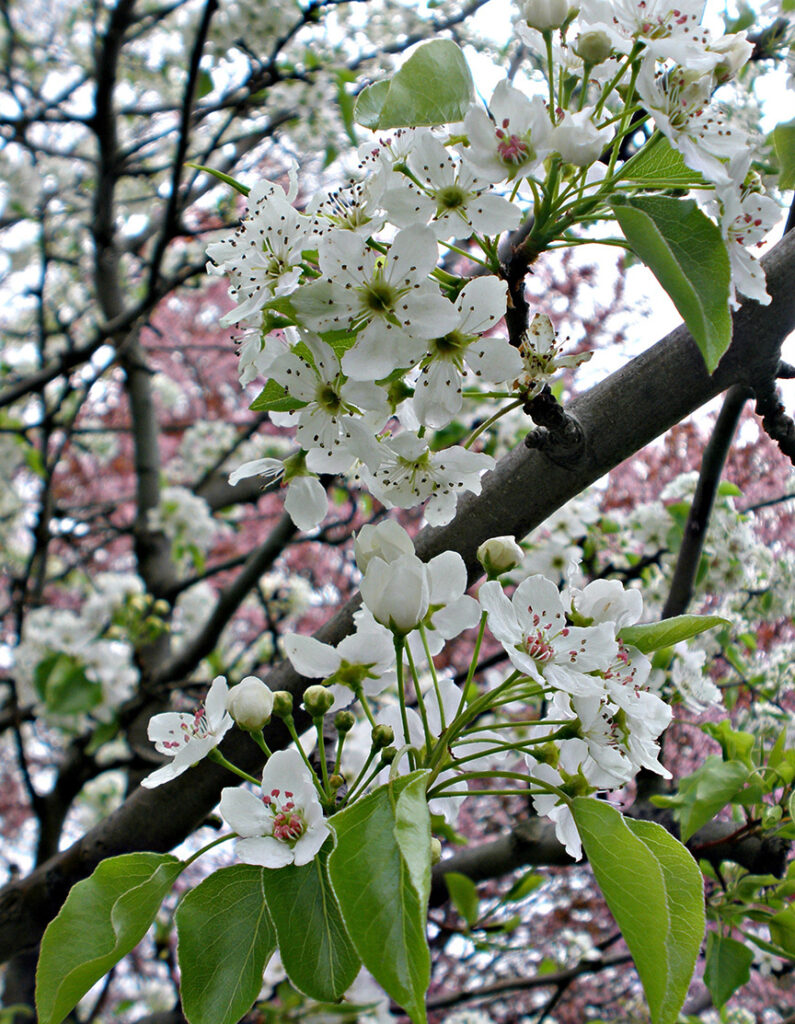
Given the chance, Callery pear will create dense thickets that crowd out native plants. A single tree can form a large patch over the course of several years. It’s a prolific seed producer that can also spread vegetatively. It prefers full sun but will tolerate some shade and drought.
A Callery pear at Ground Zero survived the attack on the World Trade Center in October 2001. It had burned and broken branches and snapped roots. It was removed from the rubble and rehabilitated. Known as The Survivor Tree, it was returned to the Memorial in 2010.
According the National Park Service, “The plants that spread in natural areas are not cultivars. They are sexually reproducing populations of multiple genotypes that recombine every generation.” They are wild-growing descendants of multiple genotypes of Pyrus calleryana.
A Callery pear cultivar, by itself, will produce sterile fruit. However, in the presence of one or more different cultivars they can produce seeds. This cross-pollination is promoted by pollinators, particularly bees. In the case of pear trees that have been grafted, it is even possible for one of the genotypes to produce fruit. Given the opportunity, it produces large quantities of seeds that are subsequently spread by birds and small animals. It’s a fast grower that readily invades fields, roadsides, open lots and woodland edges.
The northward spread of this invasive is only limited by its dislike of extreme cold. Given global warming, we can expect it to pop up all over New England. It’s already been reported in southern Wisconsin.
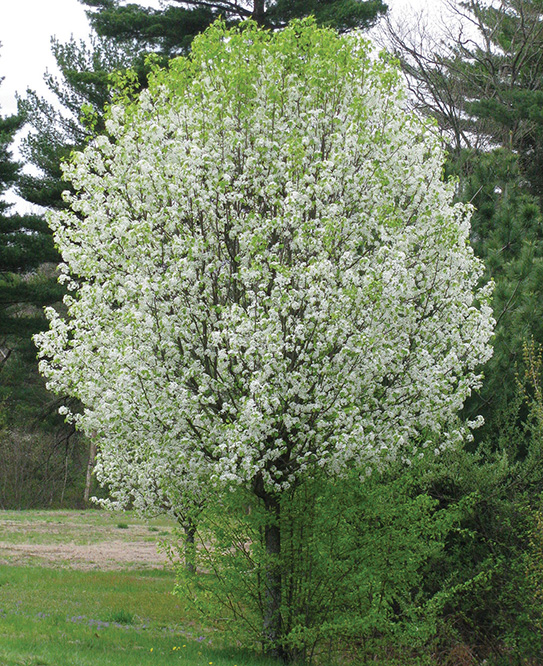
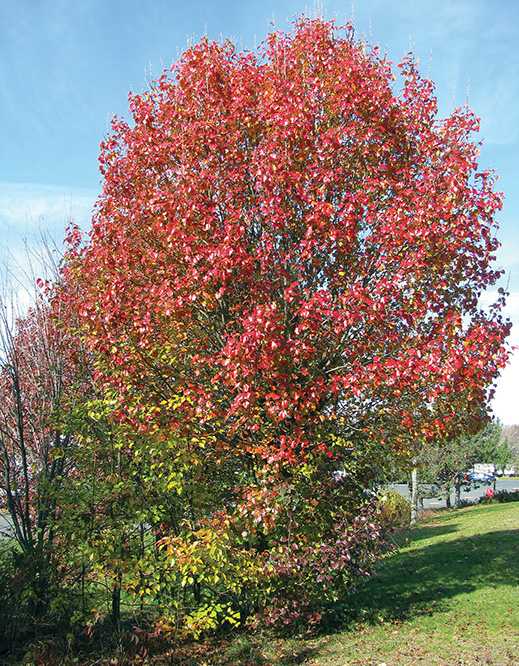
Identification
Callery pears grow 30-60 feet tall and 20-35 feet wide and may be thorny. Its alternate, oval, dark-green leaves are held on long petioles and have scalloped edges. They’re 1.5-3 inches long. Showy clusters of small white flowers with five petals appear in early spring before leaf out and are said to have an unpleasant odor. Michael Dirr describes it as malodorous. Others have called it putrid. The small round green-brown spotted fruit is hard and bitter. The leaves turns wine red in the fall.
Large branches fork from the trunk at narrow angles resulting in tight crotches that make the tree prone to splitting, especially during storms. Dirr estimates its useful life at 10-20 years.
Control
Pull or dig saplings/seedlings. Cut down larger plants and apply glyphosate or triclopyr to the stumps. Always follow the instructions on the label. The label is the law.
– Will Rowlands
